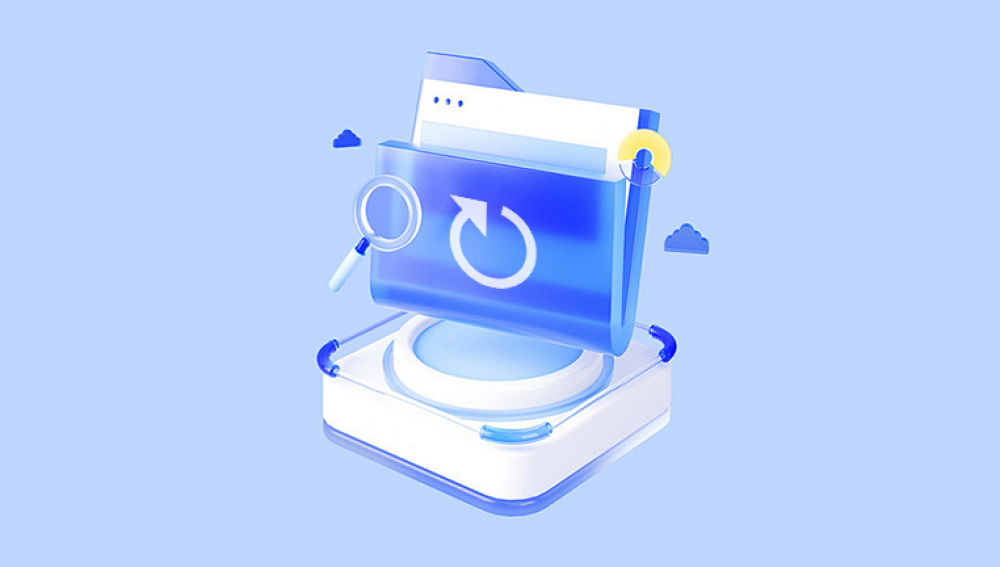AutoCAD, developed by Autodesk, is one of the most widely used design software tools for architecture, engineering, and construction professionals. However, even the most advanced software is not immune to issues. One of the most frustrating problems AutoCAD users face is file corruption when your .dwg or .dxf file becomes inaccessible, displays errors, or refuses to open altogether.
1. What Is an AutoCAD File?
AutoCAD uses a proprietary file format known as DWG (Drawing). A DWG file contains all the design data, including:
2D and 3D geometry
Layers and blocks
Metadata
Text annotations
Dimensions
References to external files (Xrefs)
AutoCAD also supports DXF (Drawing Exchange Format), which is a more open and text-based version of DWG used for interoperability with other CAD programs.

2. What Causes AutoCAD Files to Become Corrupted?
Understanding the root causes of file corruption can help you avoid them in the future. Common reasons include:
Software Crashes: Sudden termination of AutoCAD while editing a drawing.
Power Failures: Losing power while a file is being saved can corrupt it.
Improper Network Storage: Saving files to unstable or overloaded servers.
Virus or Malware Infection: Malicious code can damage or alter files.
Faulty Plugins or Scripts: Third-party extensions can sometimes introduce file errors.
Hardware Issues: Bad sectors on a hard drive or unstable memory can affect file integrity.
File Size or Complexity: Extremely large files with many layers and objects can be more prone to corruption.
3. Symptoms of a Corrupted AutoCAD File
Some common signs that your DWG or DXF file may be corrupted:
AutoCAD crashes or freezes when opening the file.
You receive error messages like:
“Drawing file is not valid.”
“Cannot open file.”
“Internal Error: !dbobji.cpp@1234”
Missing geometry or unreadable layers.
File opens but some elements are invisible or broken.
File size appears unusually small or large.
You see question marks or scrambled symbols in place of your work.
4. Can You Repair AutoCAD Files Online?
Yes — there are several online AutoCAD file repair services that allow you to upload a corrupted file and receive a repaired version without having to install any software. These services typically work by scanning your file’s structure, identifying corrupt segments, and attempting to reconstruct a usable version of the drawing.
Some of them offer free repair services (with limitations), while others may require payment for full recovery. However, they are ideal for quick fixes and basic corruption cases.
5. Free Online Tools to Repair AutoCAD Files
Panda Repair
Panda Repair is a powerful and user-friendly online solution designed to repair corrupted AutoCAD files quickly and efficiently. Whether you're working with DWG or DXF files, Panda Repair helps recover damaged data without the need to install any software or share your email. It’s the ideal tool for architects, engineers, students, and CAD professionals who need a fast and secure fix for broken AutoCAD files.
With Panda Repair, you can upload your corrupted .dwg or .dxf file directly to the platform. The system automatically analyzes the file’s structure, identifies any corruption, and attempts to repair it while preserving layers, geometry, annotations, and embedded data. The process is fully automated, secure, and requires no technical expertise.
Key Features:
Supports multiple AutoCAD versions (.dwg, .dxf)
No email or sign-up required
Fast repair process through your browser
Preserves original file formatting and drawing elements
Ideal for both 2D and 3D AutoCAD projects
How It Works:
Go to the Panda Repair AutoCAD page.
Upload your corrupted file.
Let the system process and repair it.
Download the fixed version instantly.
6. How to Use Online AutoCAD Repair Services — Step-by-Step
Let’s walk through a general process for repairing DWG files online:
Step 1: Select a Reliable Website
Pick one of the previously mentioned services. For this example, let’s use Recovery Toolbox for DWG Online.
Step 2: Upload Your File
Go to the site.
Click “Select file” and upload your corrupted DWG file (usually max size: 100–300MB).
Ensure your internet connection is stable.
Step 3: Automatic Repair Begins
The system automatically starts scanning the file.
This process may take a few minutes depending on the file size and complexity.
Step 4: Review the Preview
You’ll be shown a preview of the recoverable content.
Verify if critical objects (lines, layers, text) are visible.
Step 5: Download the Repaired File
Some platforms allow free download.
Others may require a payment for the final, fully working DWG file.
Tips:
Use a temporary or non-sensitive file for online repair to avoid security issues.
Always read the privacy policy of the repair service.
7. Limitations of Online Repair Tools
While convenient, online repair tools have several limitations:
Free services may only preview the repair, not allow download.
File size limits (some cap at 100MB).
Security concerns: Avoid uploading confidential projects.
Incomplete repairs: May not fix advanced issues like corrupted Xrefs or broken 3D elements.
AutoCAD version mismatch: Tools may not support newer DWG formats.
Payment gates: Full features often require a fee.
8. Alternative Methods to Repair DWG Files Offline
If online tools don’t work or you prefer to work offline, try these:
1. Use AutoCAD’s Built-in “RECOVER” Command
Open AutoCAD.
Type RECOVER in the command line.
Browse to your corrupted DWG file.
AutoCAD will try to automatically repair and open the file.
2. Use “AUDIT” and “PURGE”
Open the file (if it opens).
Run the AUDIT command to scan and fix issues.
Run PURGE to remove unused elements.
3. Insert Corrupted File into a New Drawing
Create a new drawing.
Use INSERT to import the corrupted file as a block.
Explode the block to access recoverable elements.
4. Use Autodesk’s Drawing Recovery Manager
AutoCAD often saves temporary backups.
Type DRAWINGRECOVERY to open the Drawing Recovery Manager.
Check if any automatic recovery versions are listed.
9. Built-In AutoCAD Repair Tools
AutoCAD offers several helpful features for file repair and backup:
A. RECOVER
Repairs and opens the drawing.
B. RECOVERALL
Recovers attached Xrefs along with the main drawing.
C. AUDIT
Checks and fixes errors in open DWG files.
D. PURGE
Removes unused objects, reducing file complexity.
E. DRAWINGRECOVERY
Shows autosaved and backup versions of recent files.
10. Preventing AutoCAD File Corruption
Prevention is always better than repair. Here’s how to minimize risks:
Save frequently: Use Ctrl+S or set AutoSave intervals.
Enable automatic backups: Configure .bak and .sv$ file creation.
Avoid unstable network drives: Especially for large team projects.
Keep AutoCAD updated: Apply patches and updates.
Avoid abrupt shutdowns: Save and close drawings before powering down.
Disable unnecessary plugins: They may conflict with DWG saving.
11. AutoCAD Backup and Recovery Settings
AutoCAD automatically saves temporary versions of your files:
.BAK files: Backup files saved in the same folder. Rename .bak to .dwg to restore.
.SV$ files: Autosave files stored in a temp directory.
You can change backup settings under:
Options → Open and Save → File Safety Precautions
AutoCAD file corruption can be a major obstacle for professionals and students alike. Whether caused by a power failure, system crash, or software glitch, a broken DWG file can delay projects and cost valuable time. Thankfully, with the rise of free and accessible online AutoCAD file repair tools, you no longer have to panic.
While free online DWG repair tools may have their limitations, they are effective in many scenarios. If those fail, AutoCAD's built-in commands like RECOVER, AUDIT, and PURGE often do the trick. With proper prevention strategies like regular backups, saving on stable drives, and using autosave features you can minimize the risk of future corruption.




